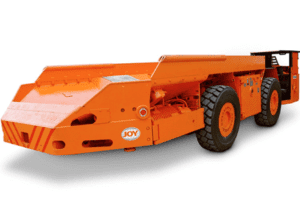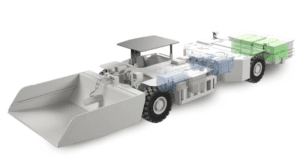Miners are exposed to pinning, crushing and striking hazards when working near coal hauling machines and scoops. A total of 42 such deaths are attributed to these type accidents from 1984 to 2014. The proximity detection system would have prevented these accidents by stopping machine movement before miners were pinned, crushed, or struck by the machine.
41 pinning, crushing, or striking accidents involving coal hauling machines and scoops have occurred since 2010: 23 that involved coal hauling machines and 18 that involved scoops. Three fatalities occurred in 2013, one involving a scoop and two involving coal hauling machines; and one fatality occurred in 2014 involving a scoop.
As the industry places more emphasis on increasing production with the use of much larger profile equipment and shuttle cars with sideboards, the requirement for proximity detection systems takes on an even more urgent need. In the state of West Virginia, a bill was passed by the legislature which changed the WV state regulation to permit the use of sideboards on shuttle cars as long as a camera was installed on the equipment. Sideboards obstruct the machine operator’s vision to the point that they have very little sightline of their surroundings or direction of travel.

The operator has to rely on a camera screen to see what is around them and in their travel way. In mines with wet, muddy conditions, it becomes difficult to keep the cameras clear and functional. We lobbied against this proposal because sideboards will create an increased potential for accidents and cameras will not give the adequate measures of protection that proximity detection will provide.
Consequently, the need for a proximity detection system takes on an increased urgency in light of the increased danger of pinning, crushing and striking hazards not only in West Virginia but in the industry as a whole due to the limitations being placed on the machine operator’s view of his surroundings.
[A total of 42 deaths are attributed to these type accidents from 1984 to 2014]
The proximity detection system will be a great asset to mines in this country as it currently is in other countries. The United States needs to play catch up with the countries which are using these systems and benefiting from them. In the ’70s and 80’s the leading cause of mine deaths were roof falls until the introduction of the Automated Temporary Roof Support Systems (ATRS). There was a pushback from the industry concerning the reliability of the ATRS technology as there is today with the Proximity Detection Systems. Since the introduction of the ATRS, it is rare to have a mine fatality attributed to a roof fall. Likewise, the proximity detection system can make a difference in eliminating pinning, crushing and striking fatalities.

Recent data from the U.S. Bureau of Labor Statistics Career Trends identified the 25 occupations that had the most reported fatalities per 1,000 full-time workers from 2011 to 2013. Number twelve on the list was underground Shuttle Car Operators. The Job Description was as follows: Operate diesel or electric-powered shuttle car in underground mine to transport materials from working face to mine cars or conveyor. The reported fatalities per 1,000 employees were 0.57. Emphasis should be placed on the fact that the data singles out the position of shuttle car operator and not simply a miner.
This proves that pinning, crushing and striking accidents are the leading cause of fatalities, just as roof falls led in the ’70s and ’80s before the requirement of ATRS. Engineering controls are sometimes needed when the behavior of people, whether due to the lack of training or the pressure to produce, cannot be relied on.
[41 pinning, crushing, or striking accidents involving coal hauling machines and scoops have occurred from 2010 – 2014]
The time for proximity detection systems is now. The industry must embrace this new technology to eliminate pinning, crushing and striking injuries and fatalities.


